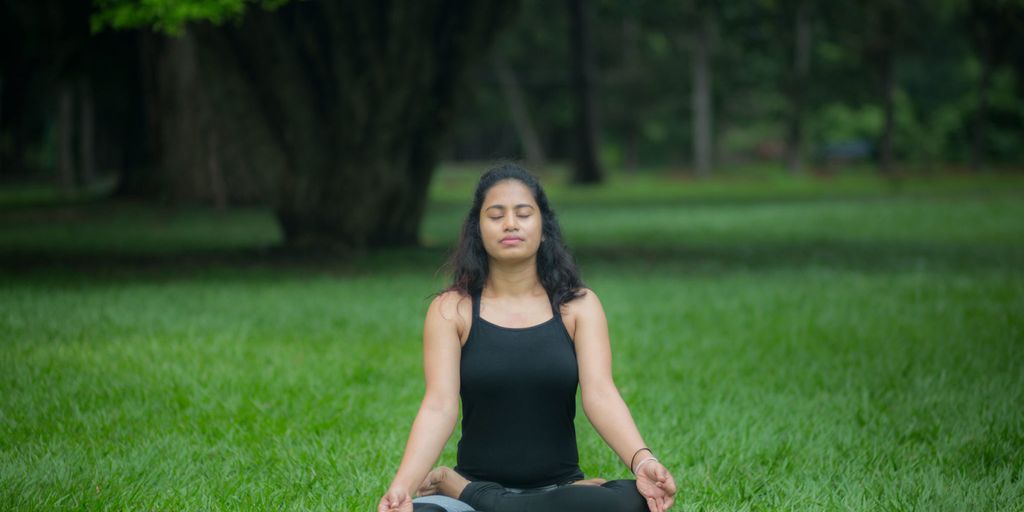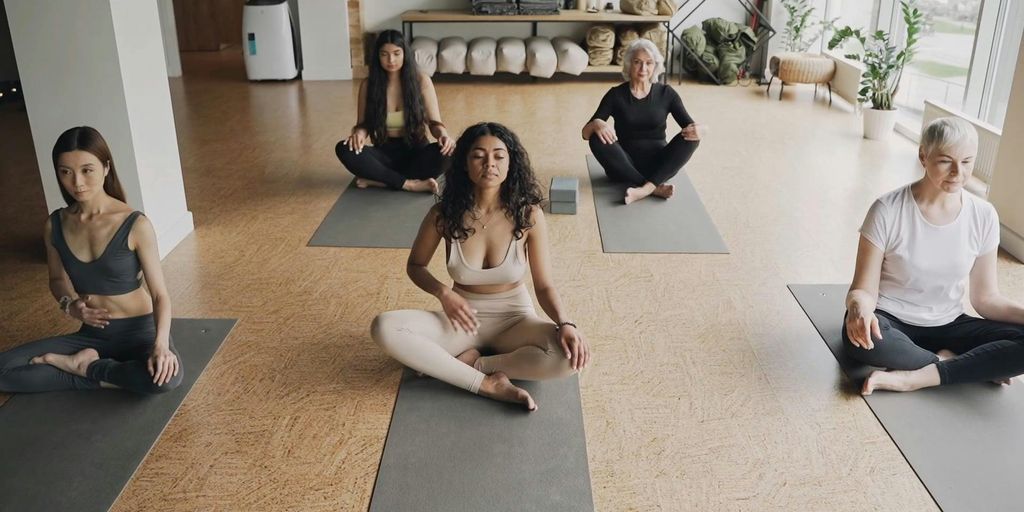
Finding the Best Yoga Mat for Your Practice: A Comprehensive Guide
Choosing the right yoga mat is essential for a comfortable and effective practice. With a variety of options available, it can be overwhelming to determine which mat best suits your needs. This comprehensive guide will help you understand the different types of yoga mats, their materials, and features, so you can make an informed decision.
Key Takeaways
- Different yoga mats are made from various materials, each offering unique benefits and drawbacks.
- The thickness and cushioning of a yoga mat can significantly impact your comfort and stability during practice.
- Texture and grip are crucial factors to consider, as they affect your ability to hold poses without slipping.
- Eco-friendly and sustainable yoga mats are available for those who prioritize environmental responsibility.
- Budget-friendly options can provide good quality, but premium mats often offer enhanced durability and features.
Understanding Different Types of Yoga Mats
Choosing the right yoga mat can significantly enhance your practice, providing the support and comfort you need. Understanding the different types of yoga mats is crucial to finding the one that best suits your needs and preferences.
Choosing the Right Yoga Mat for Your Practice Style
Selecting the best yoga mat, no matter what style you practice, can significantly enhance your experience. Our goal is to cover the best options for your practice, review the different materials used, weigh in on the pros and cons, and help you make an informed decision.
Mats for Hatha and Restorative Yoga
For Hatha and Restorative Yoga, comfort and support are paramount. These styles often involve holding poses for longer periods, so a mat with ample cushioning is ideal. Look for mats that are thicker and provide a soft, supportive surface to protect your joints.
Mats for Vinyasa and Power Yoga
In Vinyasa and Power Yoga, stability and grip are crucial. These dynamic practices require a mat that can handle a lot of movement and sweat. Opt for mats with a textured surface to prevent slipping and ensure a firm grip, even during the most intense sessions.
Mats for Hot Yoga
Hot Yoga demands mats that can withstand high temperatures and moisture. Moisture-wicking materials are essential to keep the mat dry and prevent slipping. Consider mats made from natural rubber or those with a microfiber layer that absorbs sweat effectively.
Choosing the right yoga mat tailored to your practice style can make a significant difference in your overall yoga experience. Make sure to consider the specific needs of your practice when selecting a mat.
Eco-Friendly and Sustainable Yoga Mats
Natural Rubber Mats
Natural rubber mats are a popular choice for eco-conscious yogis. These mats are made from renewable resources and provide excellent grip and cushioning. Natural rubber is biodegradable, making it a sustainable option for your practice.
Cork Yoga Mats
Cork yoga mats offer a unique combination of durability and eco-friendliness. Cork is naturally antimicrobial, which helps keep your mat clean and free from bacteria. Additionally, cork is a renewable resource, as it is harvested from the bark of cork oak trees without harming the tree itself.
Recycled and Biodegradable Options
For those looking to minimize their environmental impact, recycled and biodegradable yoga mats are an excellent choice. These mats are often made from recycled materials such as TPE (thermoplastic elastomer) or natural fibers. They break down more easily than traditional PVC mats, reducing their footprint on the planet.
Choosing an eco-friendly yoga mat not only benefits the environment but also enhances your practice by providing a healthier, non-toxic surface to practice on. It's slim pickings in the world of eco-friendly, non-toxic yoga mats, but the options available are worth considering for a healthier yoga session.
Caring for Your Yoga Mat
Cleaning and Maintenance Tips
Regular cleaning is essential to maintain the hygiene and longevity of your yoga mat. Use a gentle, non-abrasive cleaner to wipe down your mat after each practice. For a deeper clean, you can occasionally soak your mat in a mixture of water and mild soap. Avoid using harsh chemicals as they can degrade the material.
Storage Solutions
Proper storage can extend the life of your yoga mat. Always roll your mat with the top side facing out to prevent curling edges. Store it in a cool, dry place away from direct sunlight to avoid material breakdown. Consider using a yoga mat bag for added protection and convenience.
When to Replace Your Mat
Even with the best care, yoga mats don't last forever. Signs that it's time to replace your mat include visible wear and tear, loss of grip, and an unpleasant odor that persists despite cleaning. A good rule of thumb is to replace your mat every 6-12 months if you practice regularly.
Taking good care of your yoga mat not only ensures a better practice experience but also extends the life of your investment.
Budget-Friendly vs. Premium Yoga Mats
When it comes to selecting a yoga mat, the price can be a significant factor. Understanding the differences between budget-friendly and premium options can help you make an informed decision that suits your needs and preferences.
Travel-Friendly Yoga Mats
When you're on the go, having a yoga mat that is easy to carry and doesn't take up much space is essential. Lightweight mats are perfect for those who travel frequently, as they are easy to pack and won't add much weight to your luggage. These mats are typically thinner, which makes them more portable but may offer less cushioning.
Lightweight Mats
For yogis who prioritize packability, lightweight mats are a great option. They are designed to be easy to carry and fit into small spaces, making them ideal for travel.
Foldable and Compact Options
Foldable and compact yoga mats are another excellent choice for travelers. These mats can be folded into a small size, making them easy to store in your luggage or backpack. They are also designed to be durable, so you don't have to worry about them getting damaged during your travels.
Durability and Portability
When choosing a travel-friendly yoga mat, it's important to consider both durability and portability. A durable mat will withstand the wear and tear of frequent travel, while a portable mat will be easy to carry and store. Look for mats that offer a good balance of both qualities to ensure you have a reliable mat for your practice on the go.
Whether you're prioritizing grip, packability, or your budget, these yoga mats will make it easier than ever to practice on the go.
User Reviews and Recommendations
Top-Rated Mats by Yogis
When it comes to finding the perfect yoga mat, our yogis have tested over 55 unique yoga mats in the last decade. This extensive testing ensures that you get the best recommendations based on real-world use. Here are some of the top-rated mats:
- Manduka PRO Yoga Mat
- Liforme Yoga Mat
- Jade Yoga Harmony Mat
Expert Opinions
Experts in the field of yoga and fitness have weighed in on what makes a great yoga mat. They consider factors like durability, grip, and eco-friendliness. According to their insights, a good yoga mat should offer excellent cushioning and support for various poses.
Customer Testimonials
Customer feedback is invaluable when choosing a yoga mat. Many users have shared their experiences, highlighting the comfort and durability of their mats. One user mentioned, "I found the Manduka PRO to be incredibly supportive during my practice." Another noted, "The Jade Yoga Harmony Mat has the best grip, even in hot yoga sessions."
Looking for the perfect yoga mat but don't know where to start? Our yogis have tested over 55 unique yoga mats in the last decade. In this review, we put 19 of the best mats to the test to help you find your ideal match.
Discover what our customers are saying about Yune Yoga! From the best yoga mats to essential accessories, our user reviews highlight the quality and satisfaction that our products bring. Don't just take our word for it, explore our reviews and find your perfect yoga companion today!
Conclusion
Finding the best yoga mat for your practice involves considering various factors such as material, thickness, texture, and price. By understanding your personal needs and preferences, you can select a mat that enhances your practice and provides the necessary support and comfort. Remember, the right yoga mat can make a significant difference in your overall experience, so take the time to choose wisely. Happy practicing!
Frequently Asked Questions
What material is best for a yoga mat?
The best material for a yoga mat depends on your needs. Natural rubber and cork are great for eco-friendliness, while PVC offers durability and affordability.
How thick should my yoga mat be?
The thickness of your yoga mat should depend on your practice style. Thicker mats (6mm and above) provide more cushioning, ideal for restorative yoga. Thinner mats (3-4mm) offer better stability, suitable for Vinyasa or Power Yoga.
How do I clean my yoga mat?
To clean your yoga mat, use a mixture of water and mild detergent. Wipe it down with a damp cloth and let it air dry. Avoid using harsh chemicals, especially on natural materials.
Are eco-friendly yoga mats durable?
Yes, eco-friendly yoga mats made from natural rubber, cork, or recycled materials can be very durable. However, their longevity also depends on usage and care.
Can I use a regular exercise mat for yoga?
While you can use a regular exercise mat for yoga, it may not provide the same grip and stability as a yoga-specific mat. Yoga mats are designed to offer better traction and support for various poses.
When should I replace my yoga mat?
You should replace your yoga mat when it starts to wear out, loses its grip, or shows signs of damage. Typically, this can be every 1-2 years, depending on frequency of use and maintenance.


